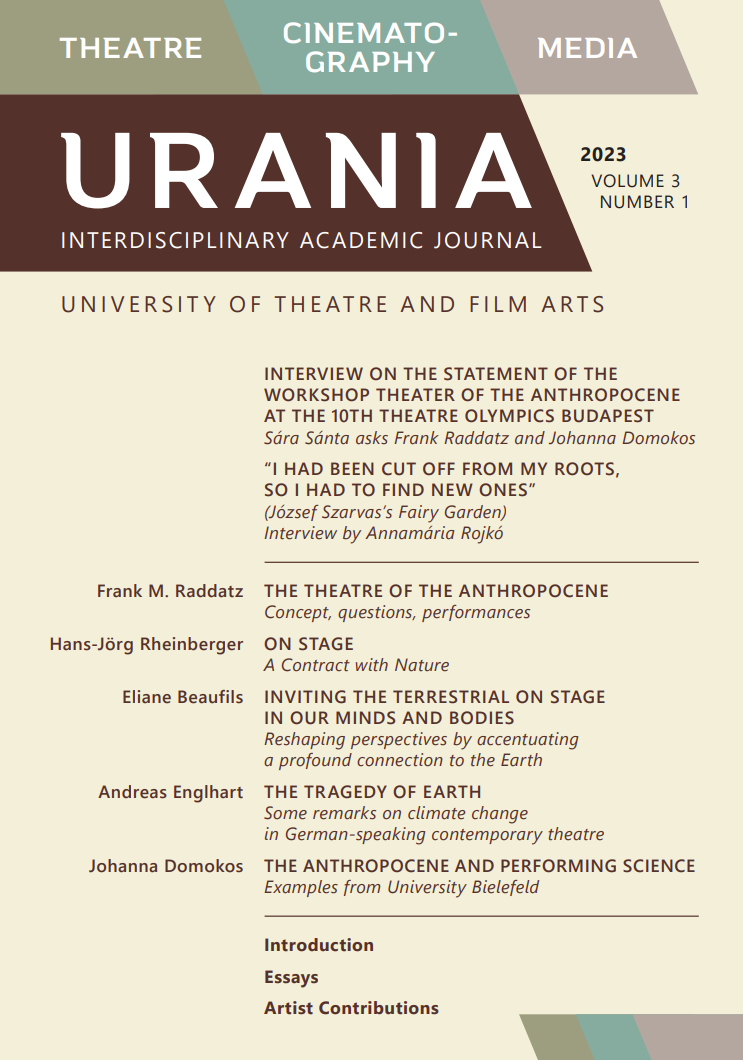The Natural and Supernatural Existence of Rivers before, during, and after the Anthropocene
Essay using the method of anthropology of art and history of mentality
Abstract
Since ancient times, rivers have accompanied mankind – and also man the rivers. They have become an inexhaustible source of our metaphors: as an ever-changing, yet eternal metaphor of existence, we could list philosophers and poets from Heraclitus to Attila József, who saw rivers as a reality far beyond their purely natural sphere. In their reflections, people recognized not only themselves but also their inescapable embeddedness in this worldly and transcendent web of existence. What has changed over the past decades (or millennia?) to turn rivers into energy and food production tools, a terrain to be tamed, or even an enemy? A situation of constraint due to overpopulation and overproduction? A dislocation of our mentality? Our technological ‘progress’ that is becoming untraceable and indigestible?
References
Ajpin, Jeremej. 2002. Szűzanya a véres havon. Budapest: Magyar Napló.
Appianosz. 2008. Róma története. (trans. Forisek Péter, Hahn István, Kató Péter, Németh György, Sipos Flórián) Budapest: Osiris Kiadó.
Baker, Samuel. 1895. A memoir. London, New York: Macmillan & Co.
Csáji László Koppány. 2004. Tündérek kihalófélben III. Szemelvények Hunza szellemi néprajzkincséből. Budapest: Napkút Kiadó.
Csáji László Koppány. „A fanatikus.” Napút online. Viewed on 18 February 2020. https://www.naputonline.hu/2020/02/18/csaji-laszlo-koppany-a-fanatikus/
Eginitis, Dimitrios. 1929. „The problem of the tide of Euripus.” Astronomische Nachrichten 236(19): 321. https://doi.org/10.1002/asna.19292361904
Foucault, Michel. (1969) 2001. A tudás archeológiája. Budapest: Atlantisz.
Heidegger, Martin. (1950) 1988. A műalkotás eredete. Translated by Bacsó Béla. Budapest: Európa Könyvkiadó.
Hesse, Herman. (1922) 1988. Siddhartha. New York: Bantam Books.
Hope, Bradley. 2012. „Egypt’s new Nile Valley: grand plan gone bad.” The National online. Viewed on 08 October 2023. https://www.thenationalnews.com/world/mena/egypt-s-new-nile-valley-grand-plan-gone-bad-1.402214
Lamb, Harold. 1980. Világhódító Nagy Sándor. Budapest: Gondolat.
Lévi-Strauss, Claude. 1952. Race and history. Párizs: UNESCO.
Morris-Kay, Gillian. 2010. „The evolution of human artistic creativity.” Journal of Anatomy. 16(2010): 158–176. https://doi.org/10.1111/j.1469-7580.2009.01160.x
Paul, Sanu. 2018. „River as a Legal Entity: An Analysis in the Light of Mohammed Salim vs. State of Uttarakhand.” The IUP Law Review 8(4): 33–41.
Tamás Ildikó. 2007. Tűzön át, jégen át. A sarkvidéki nomád lappok énekhagyománya. Budapest: Napkút.
Tolcsvai Nagy Gábor. 2011. Kognitív szemantika. Nyitra, Konstantin Filozófus Egyetem Közép-Európai Tanulmányok Kara: Europica varietas sorozat.
Turner, Victor. 1974. Dramas, fields, and metaphors; symbolic action in human society. Ithaca N.Y.: Cornell University Press.




